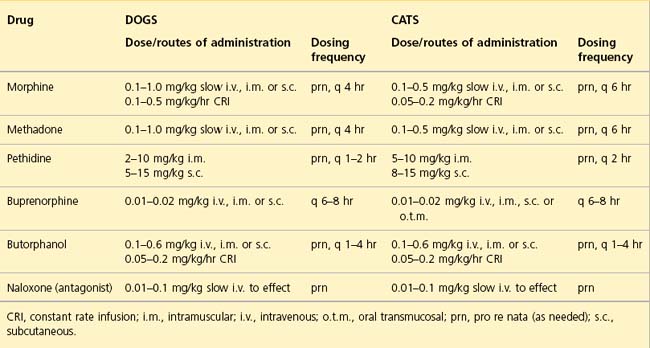5 Analgesia for the emergency patient
Pain in Companion Animals
The advantages that the ability to feel pain confers with respect to survival are well recognized. However, on-going pain results in a number of physiological and psychological responses that are disadvantageous to any animal and especially one that is affected by illness or injury. These are summarized in Box 5.1.
Pain assessment
Signs consistent with pain are summarized in Box 5.2 in no particular order and it is important to realize that these signs are derived from both patient observation and interaction. Painful cats are often much less demonstrative than painful dogs, and sick animals in general may be unable to show expected behavioural signs of pain. In addition, physiological parameters are not consistently reliable as indicators of pain.
BOX 5.2 Signs consistent with pain in dogs and cats
Clinical Tip
Analgesic Agents
Opioids
Clinical Tip
Both respiratory depression and bradycardia are rarely seen as side effects of concern during opioid administration in clinical veterinary patients that are not under anaesthesia. Furthermore, pain itself can cause respiratory compromise and appropriate opioid administration can normalize respiratory status in such cases. Until adequately treated, pain can also confuse assessment of other parameters such as heart rate and blood pressure. Dose rates, routes of administration and dosing frequencies of opioids in current use in emergency clinics are summarized in Table 5.1.
Buprenorphine
Clinical Tip
Stay updated, free articles. Join our Telegram channel

Full access? Get Clinical Tree



